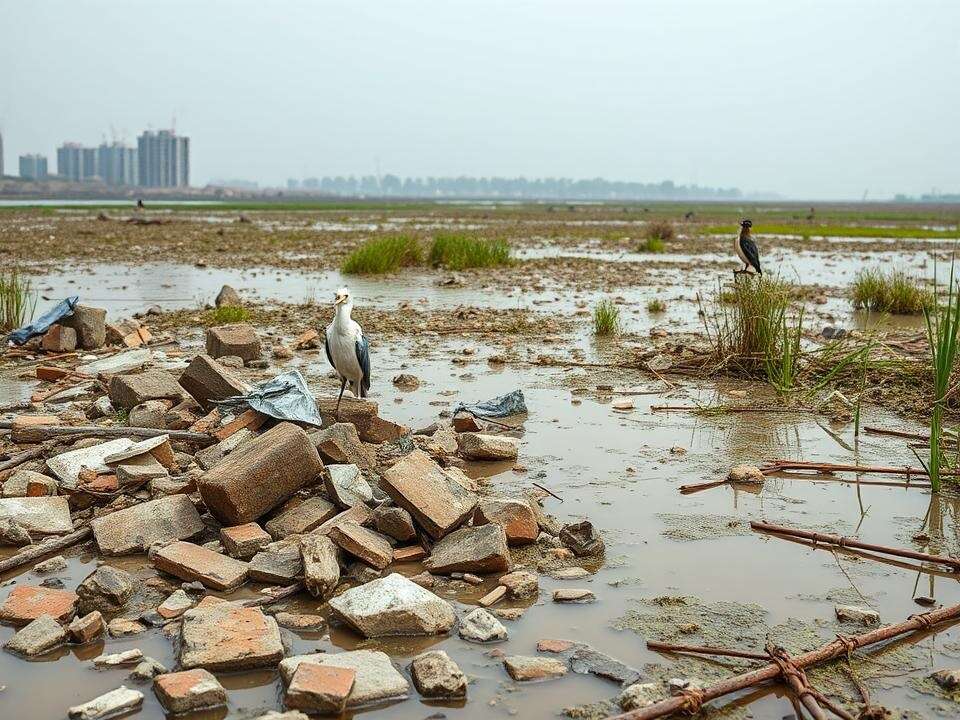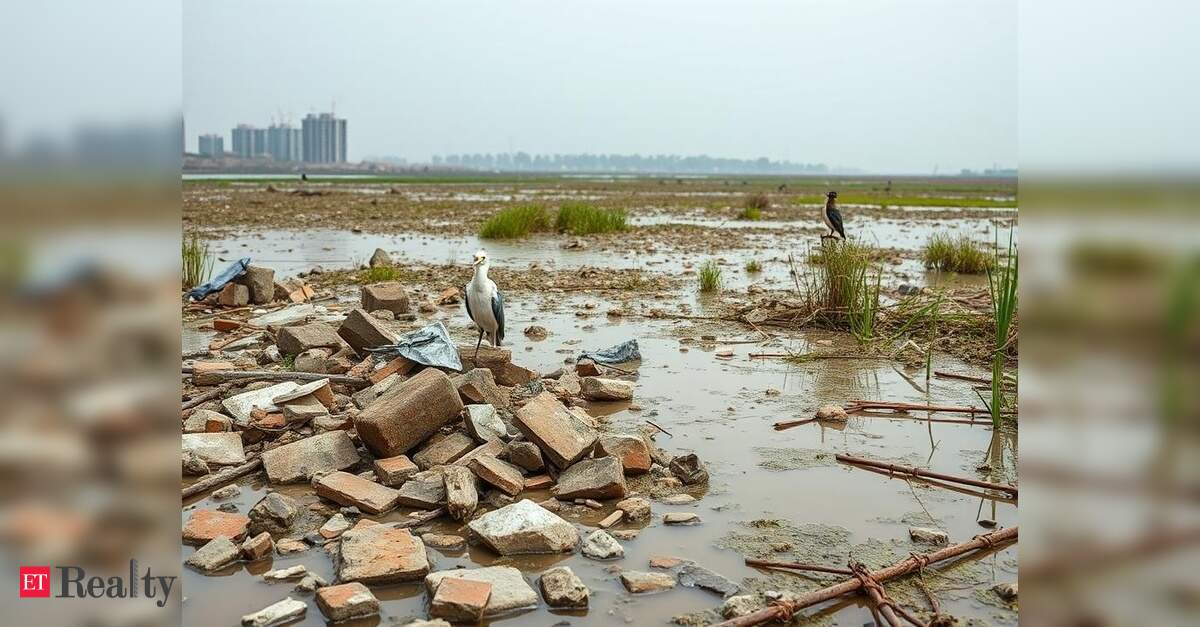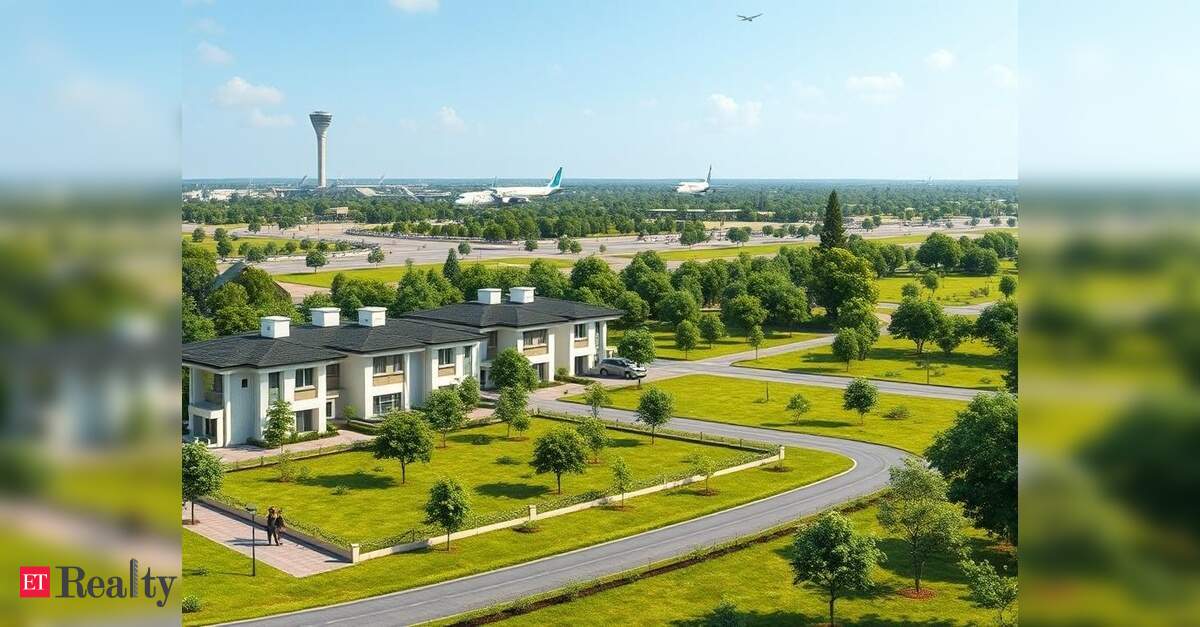
NEW DELHI: An advocacy group focused on water issues has flagged multiple ecological concerns following site visits to the eastern bank of the Yamuna floodplain near the Wazirabad barrage. Their assessment revealed that the area has been leveled with construction debris and soil waste, alongside rampant construction and encroachment activities.
The group—South Asia Network on Dams, Rivers and People—has called for action from the lieutenant governor, chief minister, and senior officials to clear the dumped waste and dismantle permanent structures in an effort to restore the floodplain. They have also addressed a formal complaint to the National Mission for Clean Ganga (NMCG).
In their report, the group highlighted 12 specific issues, including a Delhi Metro casting yard that occupies 13 acres of the floodplain. They pointed out that a new road, 5 kilometers long and 6 meters wide, has been constructed, cutting through sensitive areas from the Wazirabad crematorium to the eastern embankment near Usmanpur village. This road passes through critical structures like the metro bridge and the casting yard.
They noted that the casting yard has been in place for several years. “The floodplain must be restored by removing the thick concrete layers and the substantial concrete waste left by the facility,” stated Bhim Singh Rawat, the group’s coordinator. “The surrounding land has already been used for compensatory planting, and it’s essential that the casting yard area be returned to its native floodplain vegetation rather than further compensatory planting, which adversely affects the ecology and hydrology.”
In response, Delhi Metro authorities affirmed that the casting yard was constructed with all necessary clearances and that all environmental regulations have been adhered to. Anuj Dayal, principal executive director at DMRC, mentioned that most materials have been cleared from the area, and only some precast segments remain pending due to awaiting tree-cutting permission. All materials are expected to be removed by December this year.
The National Green Tribunal previously instructed the DDA to delineate the floodplain based on “one-in-100-years flood” criteria and ensure its restoration, but no progress has been reported.
The think tank elaborated that a significant silt mound has formed on the western bank, near where the Najafgarh drain meets the Yamuna, and must be cleared before the river’s flooding season. They also expressed concern about a dredged channel created last year contributing to riverbank erosion. Locals report that rising water levels occasionally submerge the dredged channel, posing drowning risks, particularly for children.
Additionally, the report mentioned the presence of plastic and solid waste in the floodplain and noted that a religious structure was erected after leveling the land. Effluent has been found discharging into the river via two metal pipes downstream of the Wazirabad barrage, an issue that persists despite prior complaints.
“The July 2023 floods have eradicated all previous plantation efforts and artificial fish ponds established downstream of the Wazirabad barrage in 2022 and 2023, resulting in a waste of public funds amounting to lakhs,” concluded Rawat.




